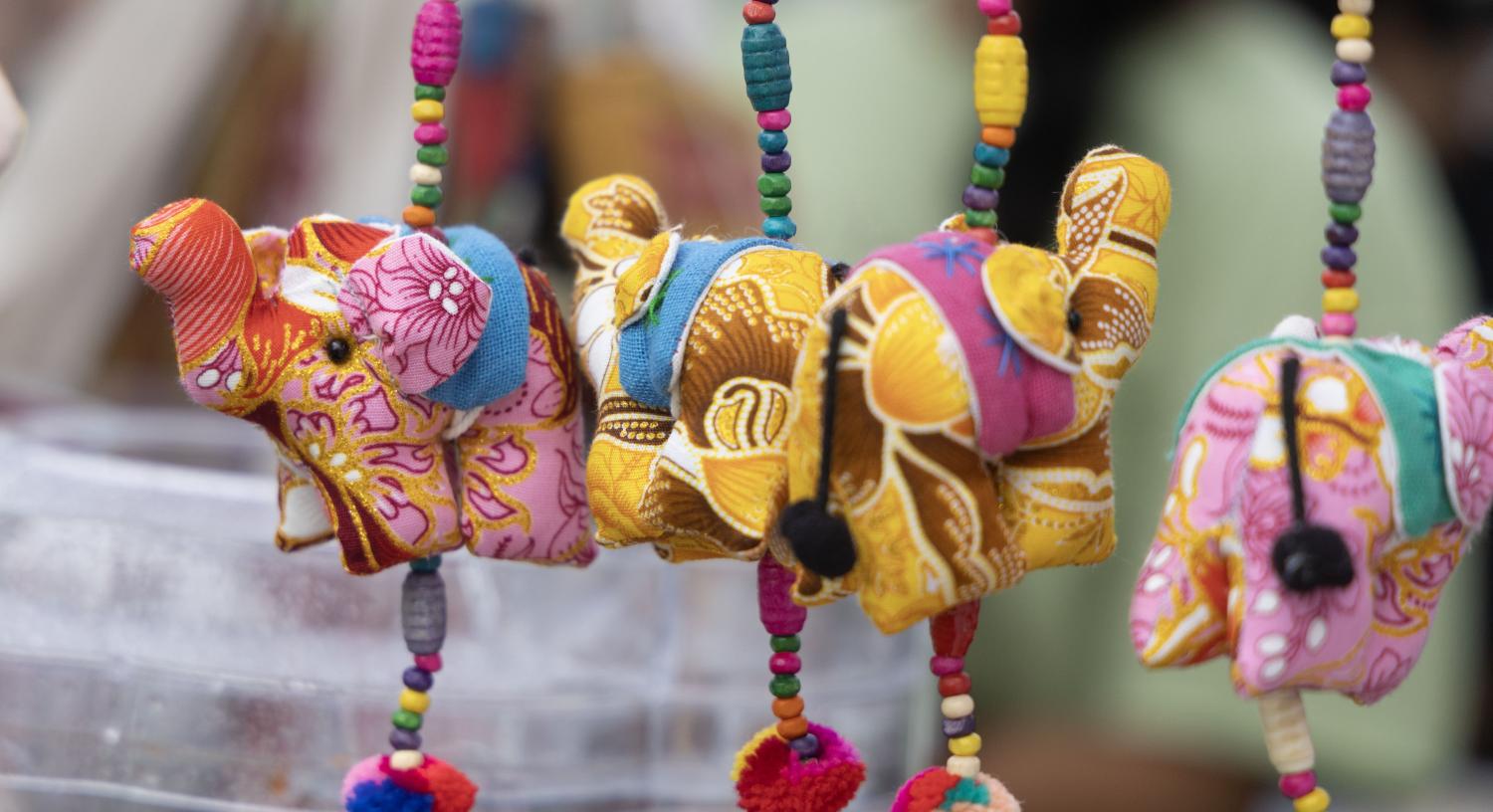Story by Oliver Wood-Morris, Lucy Coffey, Lillie Nhep, and Clarissa Dean
As the annual Bowling Green International Festival took place on Sept. 28, people of many cultures braved the rainy weather and gathered in Circus Square Park for food, music, dancing and cultural activities.
According to the website, the annual event “honors the heritage and diversity among (Bowling Green) residents through music, dance, demonstrations, authentic foreign foods, activities, cultural displays and an international bazaar.”
With over 200 volunteers and 12 organizers according to the website, the Bowling Green International Festival featured booths, performers and activities for all ages. The Talisman’s writers and photographers were there to capture it all.
Showcasing the richness of Arabic dance traditions
Amid the tents filled with aromas and shining decorations, musical sounds filled the west lawn of the festival that belonged to Safiya Nawaar, owner of Arabesque World Dance, and her belly dancing troupe. Nawaar said her troupe came to the festival to showcase their dances and share their appreciation of Middle Eastern culture.

Nawaar said she has been performing Arabic-style belly dancing for 24 years, and previously was trained in ballet, jazz and tap as a child. She said she has always been in love with dance, and belly dancing was inspiring for her.
“25 years ago my mother-in-law invited me to an adult dance class and they taught belly dancing along with folkloric style,” Nawaar said. “I just absolutely fell in love with it.”
Nawaar said her studio specializes in both traditional and folkloric Middle Eastern dance. Both styles draw influence from countries such as Lebanon, Egypt and Turkey. Although she was born and raised in America, she said her dedication to understanding the culture has taken her to dance instructors around the world.
“I have trained with Egyptian teachers, Lebanese teachers and some from Iran and Iraq,” Nawaar said. “Although this is my business and I make money from it, I want the cultures to be recognized and everyone to know I am doing this from the heart.”
Nawaar said that in belly dancing culture they often wear a bedlah, or a fitted top paired with a hip belt and a full-length skirt. At the festival, they wore a jalabiya, or a one-piece women’s overdress that is worn with a hip skirt, she said. Along with Nawaar’s jalabiya, she said she adorns sāgāts — Egyptian finger cymbals.
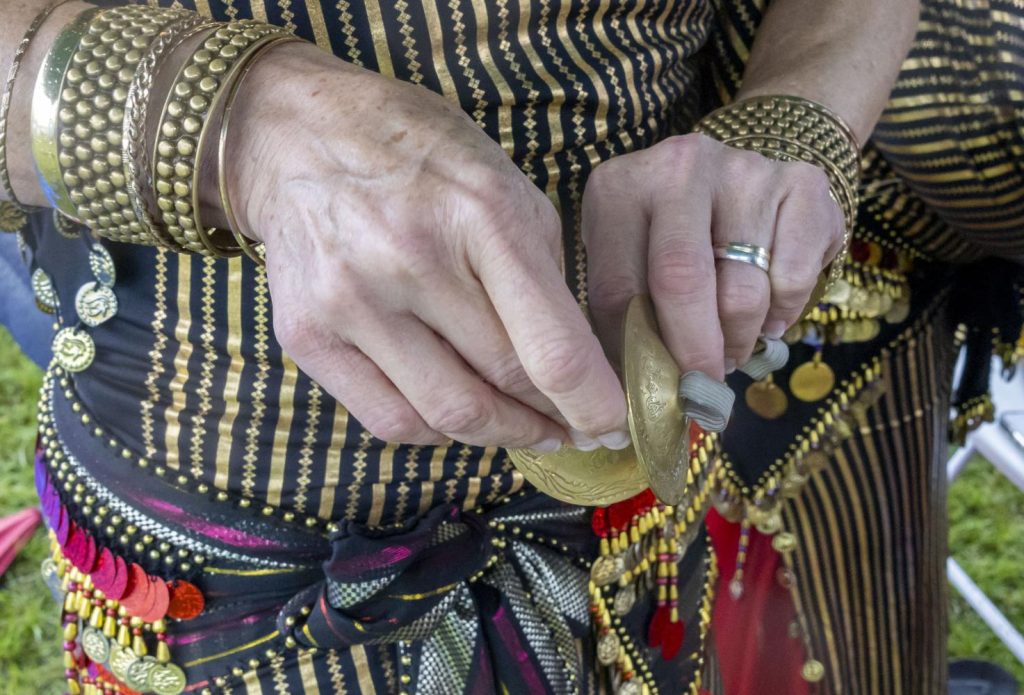
Her troupe includes dancers with over two decades of experience alongside newcomers who just began last year. Nawaar said she offers classes for all skill levels, from beginners to advanced students. Students can learn dances in a class setting or, for those who want to showcase their skills, join troupes that perform at recitals, parties or festivals, Nawaar said. More information about classes and the troupe can be found on her Facebook or Instagram.
Sharing the beauty of Honduras through jewelry
Inside a tent with a Honduran flag swaying in the wind was Lourdes Lerón, using her booth to highlight her handcrafted jewelry.
Lerón, who lived in Honduras until moving to Kentucky in 2011, said she makes 90% of her jewelry and it all has influence from her home country.
“I make a lot of things out of coconut, corn husk, flour, shell and earrings,” Lerón said. “I also have a lot of Mayan stuff; it is my hobby and I love it.”
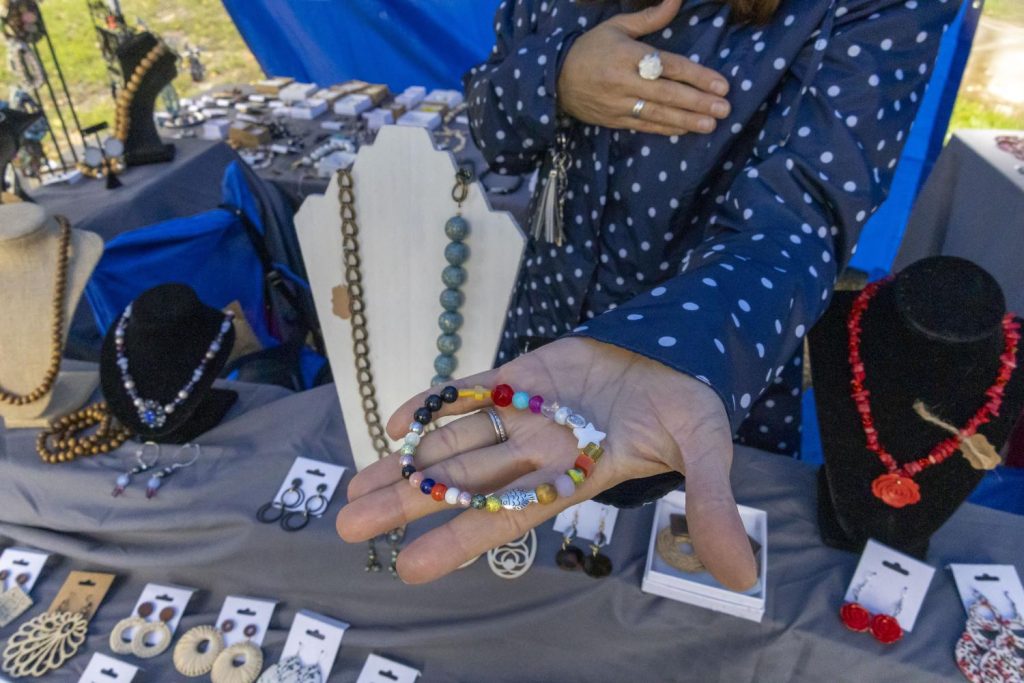
Lerón said she has been making jewelry to sell and share with others since 2013, but her true start was in 2004, after being inspired to create a bracelet that told the story of Jesus. At the bracelet center is a star charm, symbolizing the star that guided the three wise men to Jesus, represented by three gold beads, Lerón said. A pearl signifies the birth of Jesus, while a golden bead stands for the gift of gold, and another bead represents frankincense.
A brown bead reflects Jesus’s life as a carpenter, and a fish symbolizes his role as the fisher of men. She said the bracelet features twelve colored beads for the disciples. One black bead represents Judas, a red bead honors the blood Jesus shed, and a cross commemorates his sacrifice.
A blue bead represents his ascension to Heaven, alongside three white beads symbolizing the Father, the Son, and the Holy Spirit, Lerón said. Finally, a heart embodies his love for all his followers.
Lerón’s work is not sold out of a shop, but she makes jewelry for her friends and family. She said she welcomes orders on her Instagram.
Exploring Germany’s rich traditions and customs
The festival had multiple booths set up to learn more about different cultures. In particular, an informational booth with colored posters and creative designs displayed the culture of Germany.
Ferrel Rose, a German and Spanish teacher at Bowling Green High School, said that she has been attending the festival for 25 years. She said this was the tenth year that she had a tent and display featured in the festival.
“I’ve been interested in Germany for 40 years,” Rose said. “I love languages, and I’ve studied a bunch, but German is my main one.”
Rose’s booth consisted of German presentations showcasing maps and information, as well as some popular children’s books in German. One display highlighted a partner exchange program in Bowling Green, where students can visit Germany during the German school year.
Leah Watson, a sophomore at Bowling Green High School, was helping at the booth and said that her favorite German tradition is to show others the schultüte. A schultüte is a decorated cardboard cone that German children receive when they enter the first grade. Watson said that usually, the cone is filled with candies and other treats.
She said they usually host craft projects at the festival for children to make their own schultütes, but the weather changed their plans.
“We couldn’t do it this year because of the rain,” Watson said. “But it’s still a cool tradition that they do in Germany.”
Rose said that she likes that the festival allows Germany’s culture to be shared with others.
“Students who take German are typically very curious about different cultures,” Rose said. “In all, this is a great opportunity for them to experience a different culture.”
Embracing Chinese culture with every note
Chinese culture was displayed around the festival in numerous ways. Despite the rainy weather, Gigi Lamb, president of the WKU Chinese Club, played the traditional Dizi, a Chinese woodwind instrument. Lamb said the club came to the festival to showcase their instruments and recruit more members.
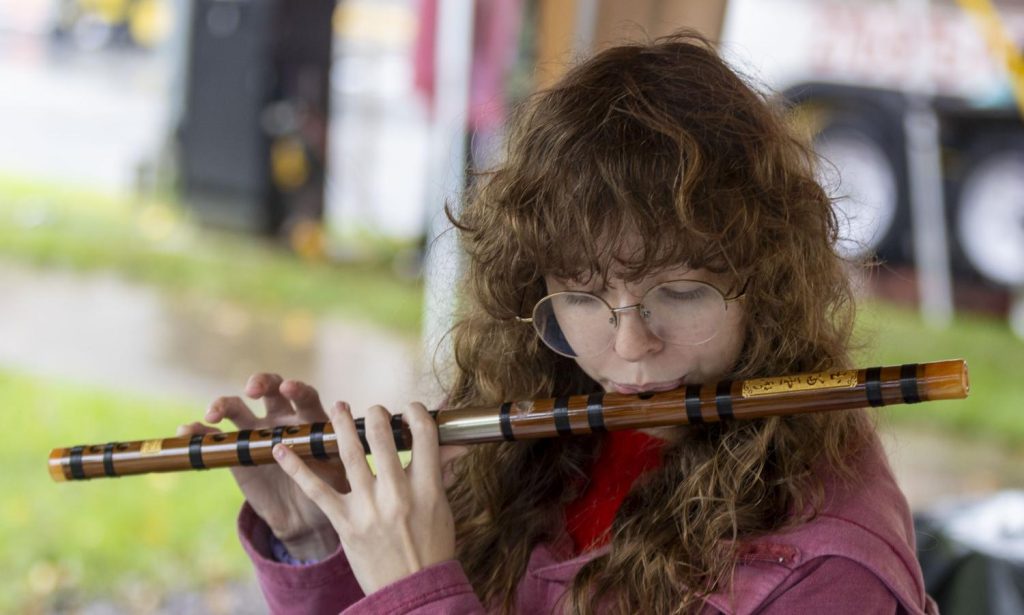
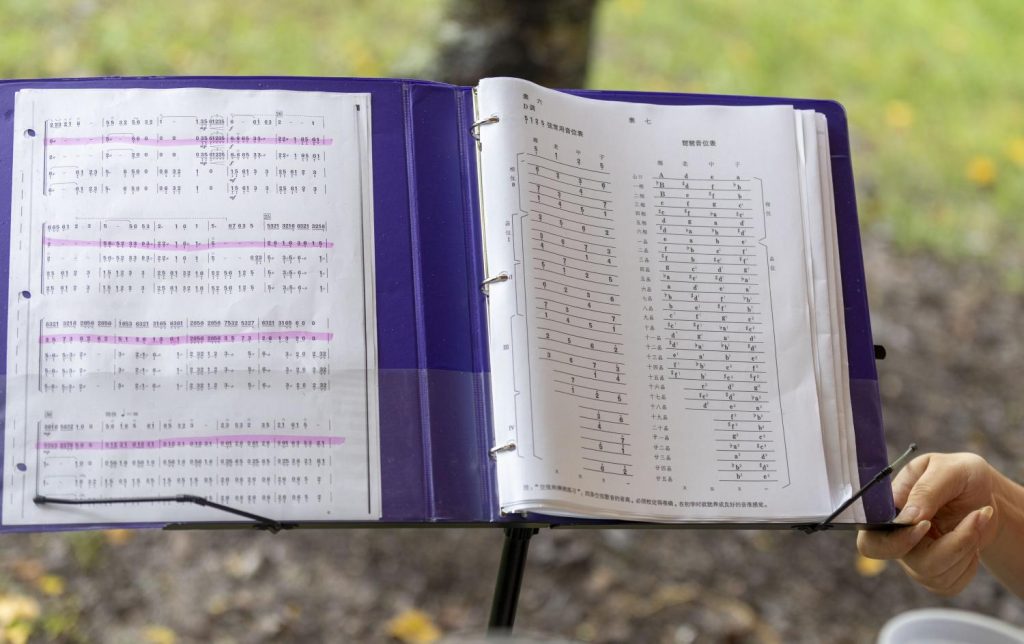
“The club started in 2011, so it’s a pretty long standing club,” Lamb said. “We like to show people what Chinese music looks like and what it is — kind of like an appreciation club.”
Faculty advisor Dr. Ting-Hui Lee said that Chinese music sheets look slightly different than what other students are used to.
“It’s really easy, instead of A-B-C notes, it’s 1-2-3 notes,” Lee said.
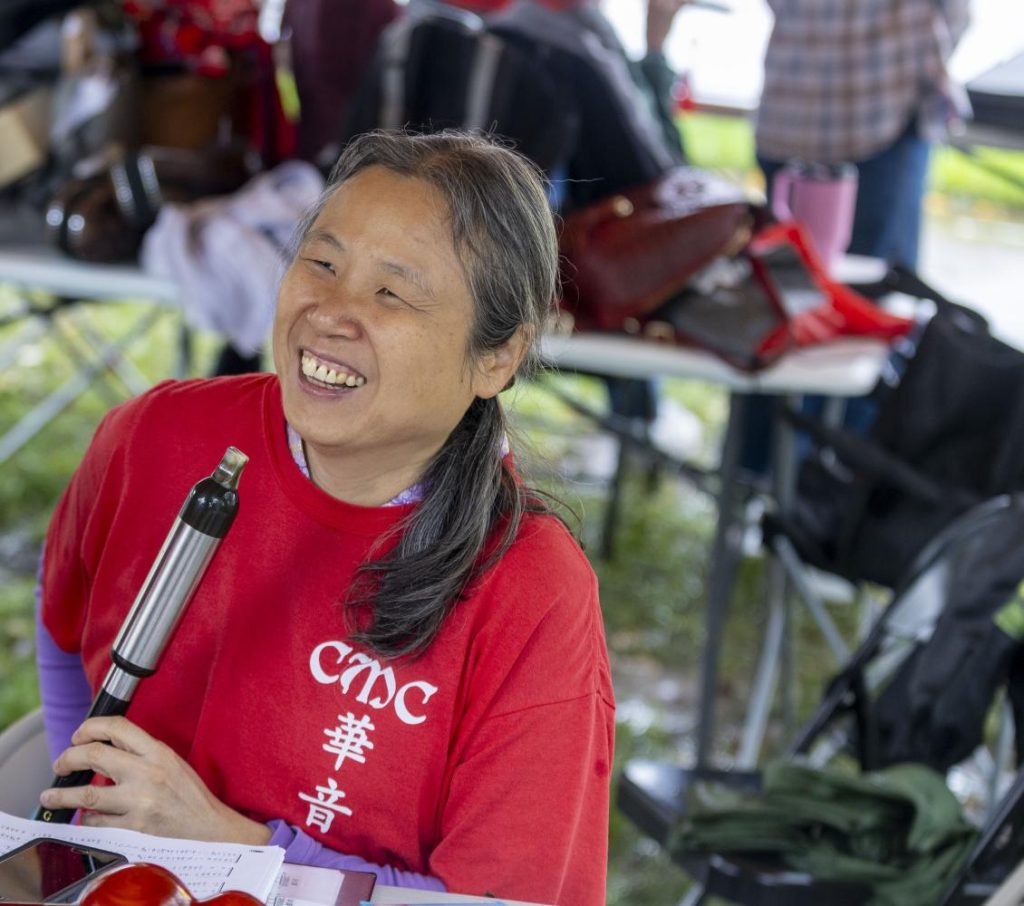
Lamb said that performing for her is a soothing and relaxing experience. She said she encourages students to participate even if they don’t have any prior experience. She invites everyone to attend their concert on April 12, 2025. More details can be found on their website.
Celebrating Asian culture through cuisine
Alongside other Asian displays, the WKU Asian American Association set up a booth featuring dumplings and lumpia for sale. President May Ouansomabth from Russellville, Kentucky said that dumplings are a Chinese dish, while lumpia is a Filipino dish.
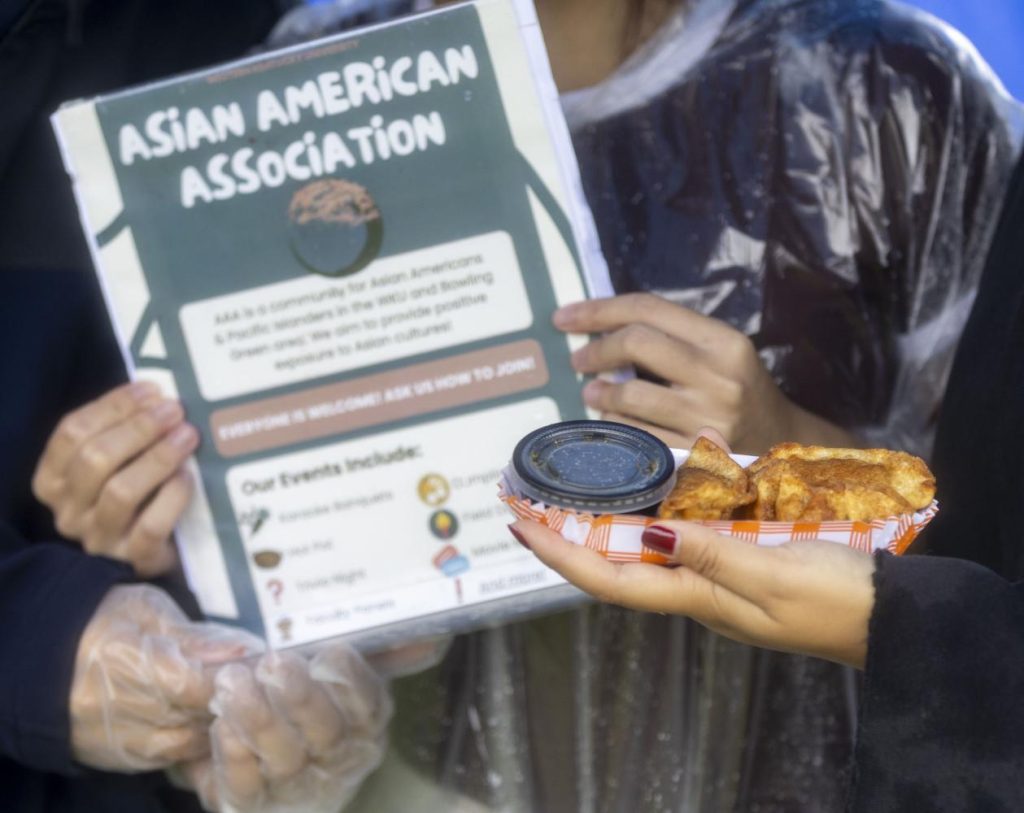
Ouansombath said the organization started in 2021 and she strives to build a community on and off campus. The WKU Asian-American Association’s booth seeks to raise funds and awareness for the club and the Asian American community substantially, according to Ouansombath.
Before she attended WKU, the association’s event coordinator and public relations chair Elaine Pham from Madisonville said that because she grew up in a smaller town, she never really had a community to relate to. She said the group has brought her some exposure to her own culture.
“I really love the people in the club; it’s a super great atmosphere,” Pham said. “Everyone in the association is passionate about creating a good community and raising awareness for Asian American issues.”
Pham said the club discussed Kentucky’s diversity, equity and inclusion bill and that the association often brings up issues about diversity being taught in the classroom. The DEI bill aims to fund DEI initiatives within public colleges. However, Kentucky lawmakers recently reviewed Senate Bill 6, which restricts funds for DEI resources, according to the Kentucky Public Radio.
Pham said the association has also given her a kind of camaraderie among other group members. The Asian American Association’s Instagram has more information on their next upcoming events.
Bringing Japanese flavors to life
Parts of Japanese culture were also represented in the food booths as the employees of Simply Ramen, a locally owned business, were set up attracting customers with the smell of their ramen.
Vietnam native Rob Sparkman opened Simply Ramen with his wife in the midst of the COVID-19 pandemic in 2020. Despite the pandemic, Sparkman said that their business still grew over time.
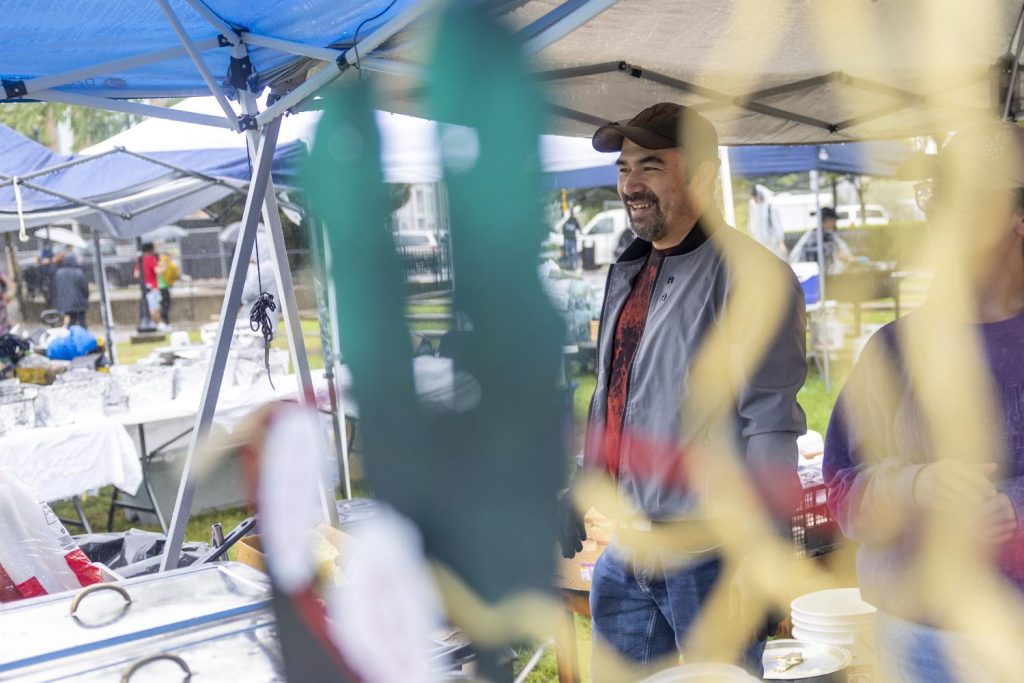
Simply Ramen employee Alyssa Sunday from Aiea, Hawaii, said that working for Simply Ramen has given her the opportunity to meet individuals within Japanese culture.
“I love meeting new people and getting to learn more about different cultures,” Sunday said.
Among all the different flavors of ramen they sell, Sunday said the staff favorite ramen flavor is the “spicy miso.” The spicy miso ramen bowl contains corn, scallions, spicy chicken, soft boiled egg, roasted seaweed and spicy miso tare.
When it comes to the customers, Sunday said the most popular ramen flavor is the “spicy chicken” ramen bowl. This popular dish contains corn, scallions, spicy chicken, marinated egg and roasted seaweed.
“It’s nice to see what kind of other foods represent each culture,” Sunday said. “We come to the festival every year but this is the first year we have served ramen.”
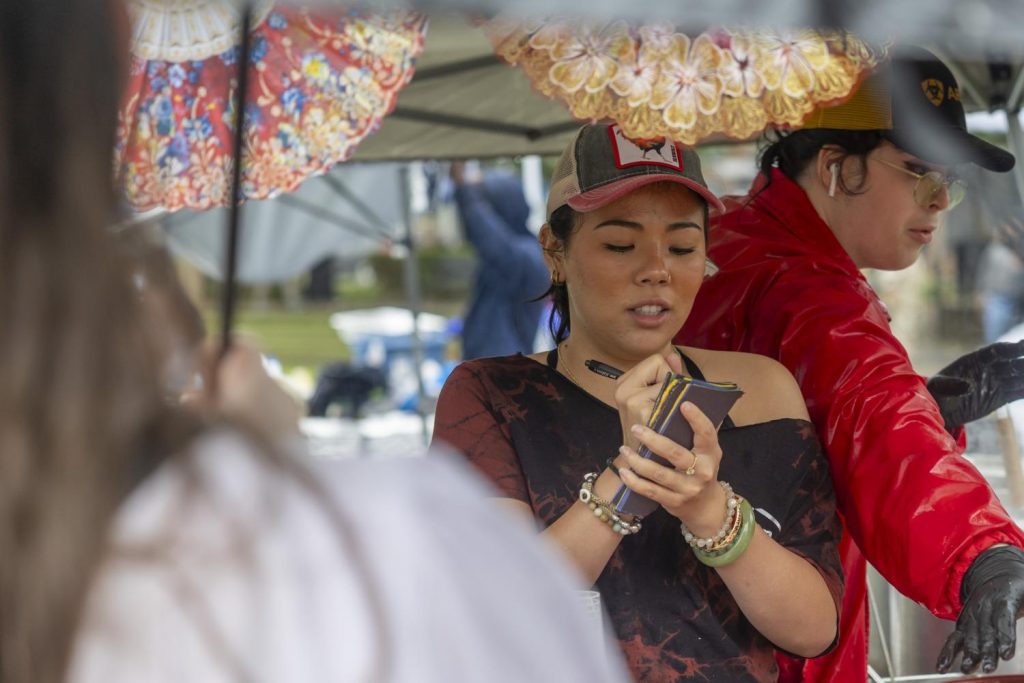
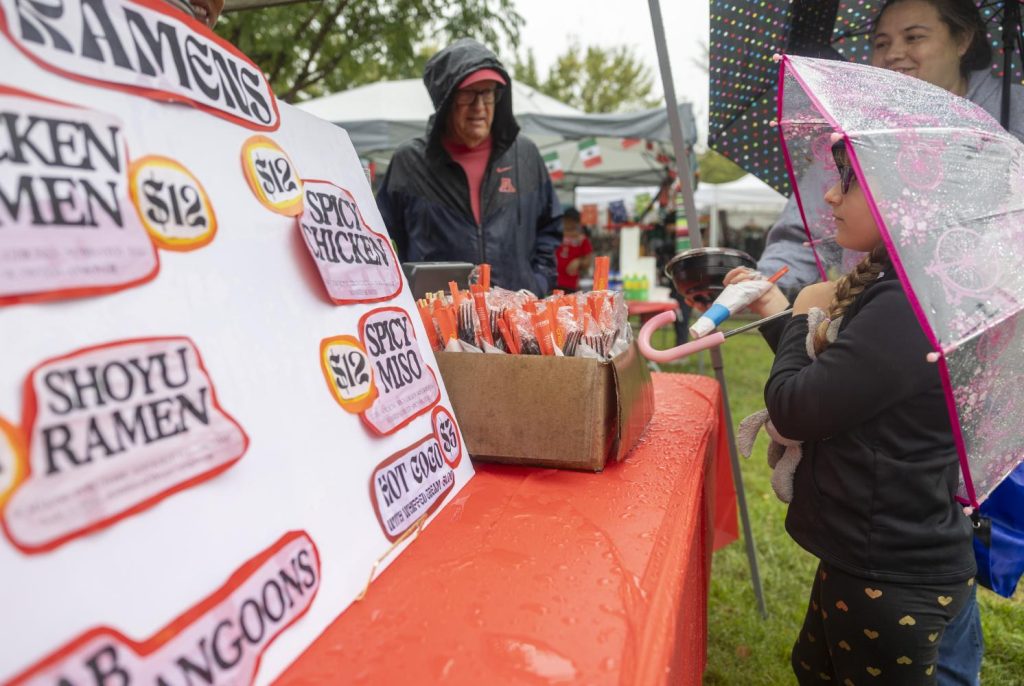
Sparkman said that he got the idea of selling ramen because there wasn’t a ramen restaurant in Bowling Green. He said he urges everyone to come out and try their different flavors of ramen located at 801 Campbell Lane.
“We wanted to be unique and share the Japanese culture in a way that isn’t shown a lot,” Sparkman said.
While ramen isn’t connected to his Vietnamese culture, Sparkman said it reminds him of his culture because his wife attended culinary school and is very familiar with it.
“Whether it’s Vietnamese culture or the Japanese culture, we feel like it’s very important to showcase,” Sparkman said. “That is why the festival will always be special to us.”


